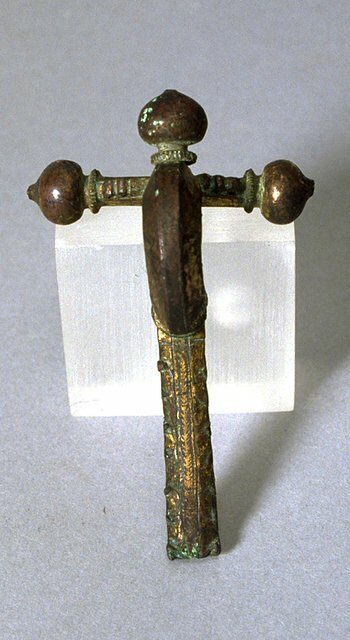Crossbow fibula with vegetal ornament on the catchplate
Gallo-Roman

Description
March 28, 2009
A gilded badge of pride and status, this finely crafted pin would have distinguished its wearer and publicly displayed his elevated rank. Only men who had attained an official position in the Roman Empire were authorized to wear a fibula of this type, which was later named by scholars for its resemblance to the crossbow. The fibula would have been fastened prominently at the right shoulder to secure a cloak, as seen in the fourth-century portrait of the powerful Roman general Stilicho. Although the original owner of the fibula remains unknown, like Stilicho he probably belonged to one of the Germanic peoples that settled within the Roman Empire to serve in its armies and administration beginning in the third century.
Subject Matter:
Crossbow fibulae, a type of brooch whose name derives from its resemblance to the much-later weapon, were used by men to pin an outer robe at the right shoulder. The folds of the robe were gathered beneath the arched bow segment of the fibula above the trilobed crossbar and held in place by a pin, while the longer catchplate projected vertically above the shoulder. During the fourth through sixth centuries men, typically of Germanic origin, who were granted an official position in the Roman Empire wore such fibula to communicate this important social distinction.
Physical Description:
This fibula, a type of brooch used to pin outer garments, features a crossbar that ends in three onion-shaped terminals, which give the fibula a shape reminiscent of a crossbow. An arched bow connects the crossbar to the longer catchplate, which is ornamented with vegetal motifs.
Usage Rights:
If you are interested in using an image for a publication, please visit https://umma.umich.edu/request-image/ for more information and to fill out the online Image Rights and Reproductions Request Form.